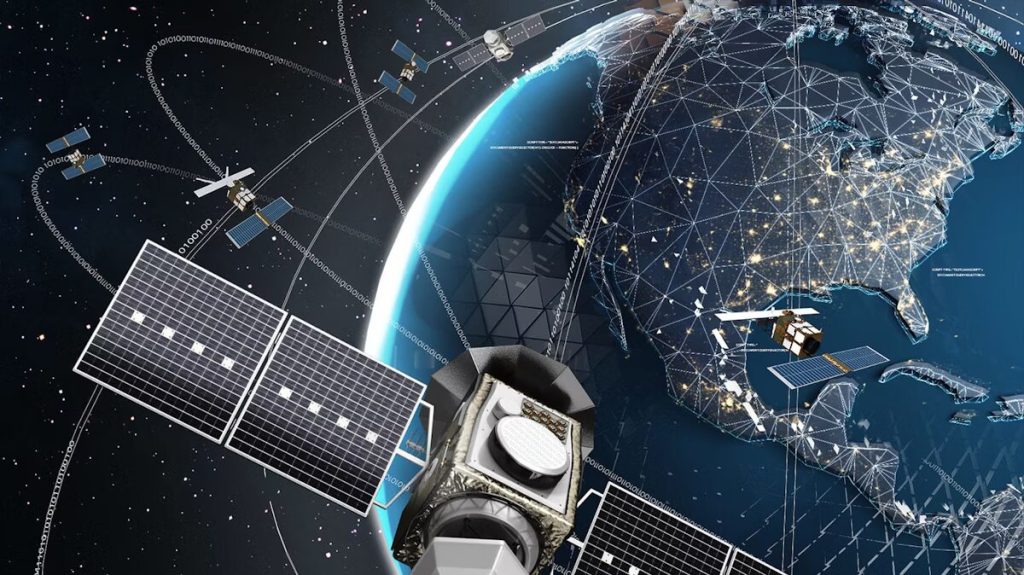Introduction
Satellites have fundamentally transformed the way we communicate, serving as the backbone of modern connectivity. From providing reliable television broadcasting to enabling global internet access, satellites have become integral to the infrastructure of global communications. As the world becomes increasingly interconnected, the role of satellites has expanded, enabling communication over vast distances and reaching even the most remote regions of the Earth. This article will explore how different types of satellites improve global communications, the technological advancements driving their capabilities, and the broader applications beyond communications, such as disaster monitoring, climate studies, and navigation.
Satellite Types
Geostationary Satellites: How They Enable Global Television Broadcasting and Weather Forecasting
One of the most well-known types of satellites in global communication systems is the geostationary satellite. These satellites orbit the Earth at an altitude of about 35,786 kilometers (22,236 miles), positioned directly above the equator. Due to their orbital speed matching the Earth’s rotation, they remain in a fixed position relative to the surface of the Earth. This unique feature enables them to provide continuous coverage over a specific geographic area.
Geostationary satellites play a crucial role in television broadcasting, enabling the transmission of satellite TV signals to millions of homes around the world. By acting as relay stations for television signals, geostationary satellites ensure that broadcast content can be transmitted across large distances without interruption. They also support the transmission of data for telecommunications, internet services, and radio broadcasts.
In addition to communication services, geostationary satellites are instrumental in weather forecasting. They provide continuous, real-time imagery of Earth’s atmosphere, enabling meteorologists to monitor weather patterns and track storms. This is especially critical for early warning systems that provide forecasts for hurricanes, typhoons, and other extreme weather events. Furthermore, these satellites are used to monitor environmental changes and gather data on climate change, which has become increasingly important for global scientific efforts.
Low-Earth Orbit (LEO) Satellites: Their Role in Providing Internet Connectivity to Underserved Regions
While geostationary satellites dominate many traditional communication services, low-Earth orbit (LEO) satellites are becoming increasingly important in the global communications landscape. LEO satellites orbit at much lower altitudes, typically between 160 and 2,000 kilometers (100 to 1,240 miles) above the Earth’s surface. Due to their closer proximity to Earth, LEO satellites offer significantly lower latency (signal delay) and faster data transmission speeds compared to their geostationary counterparts.
LEO satellites have a major role to play in bridging the digital divide by providing internet connectivity to underserved or remote regions of the world. These regions, which often lack reliable infrastructure for broadband internet, can benefit from the large-scale deployment of LEO satellite constellations. Unlike traditional communication infrastructure, such as undersea cables or cell towers, LEO satellites do not require extensive ground-based infrastructure, making them ideal for connecting remote and rural areas that are otherwise difficult to serve with terrestrial networks.
One of the most well-known initiatives in the development of LEO satellites for global internet coverage is SpaceX’s Starlink program. Starlink aims to deploy a massive constellation of small satellites in LEO to provide high-speed, low-latency internet to areas where traditional broadband is unavailable or unreliable. As of 2025, the Starlink network continues to grow, with thousands of satellites already in orbit and millions of subscribers across the globe. This service has the potential to change the landscape of global internet access, ensuring that more people, particularly in rural and remote regions, can connect to the digital world.
Technological Advancements
Starlink and Satellite Internet: How SpaceX’s Starlink is Revolutionizing Global Internet Access
One of the most exciting technological advancements in satellite communications is the development of satellite-based internet, particularly through SpaceX’s Starlink program. Starlink aims to provide affordable, high-speed internet services globally, especially to rural or underserved areas, by deploying a large constellation of LEO satellites.
The Starlink system operates through a network of interconnected small satellites that orbit Earth in low-Earth orbit. These satellites communicate with ground stations and user terminals, which are installed at the customers’ locations. Unlike traditional satellite internet systems, which suffer from high latency due to their reliance on geostationary satellites, Starlink offers much lower latency and faster speeds due to its much closer satellite orbits.
This advancement in satellite internet is particularly transformative in areas where traditional broadband infrastructure is either absent or prohibitively expensive to build. In addition to providing high-speed internet to rural homes and businesses, Starlink has the potential to support critical services like telemedicine, distance education, and e-commerce in areas that were previously disconnected from the global network. As Starlink expands its constellation, it is poised to bring reliable internet access to millions of people, especially in the developing world, where traditional broadband services have been limited.
Communication Relays: How Satellites Relay Data Between Ground Stations and Provide Seamless Communication Across Continents
In addition to their role in television broadcasting and internet connectivity, satellites are also crucial in facilitating global communication by acting as relays for data transmission. Communication satellites enable the transmission of signals between ground stations across vast distances, ensuring seamless communication between continents.
Satellites in geostationary orbits are particularly effective for long-distance communication because they provide continuous coverage over specific regions of the Earth. For example, a communication satellite in orbit can relay signals from one ground station to another, allowing businesses, governments, and individuals to communicate across oceans, from Europe to North America, or between Asia and Africa. These satellites are often used for secure communications, data transfer, and real-time voice communication, serving critical needs for international business and diplomatic functions.
Furthermore, satellites help in the implementation of global navigation and time synchronization systems. By transmitting highly accurate timing signals, communication satellites ensure that global networks, such as financial systems or electrical grids, remain synchronized, minimizing errors and improving operational efficiency.
Applications Beyond Communications
Climate and Disaster Monitoring: Satellites Helping to Track and Predict Natural Disasters, Monitor Climate Change, and Improve Resource Management
Beyond traditional communication roles, satellites are also pivotal in monitoring and responding to climate change and natural disasters. Earth observation satellites are equipped with advanced sensors that provide real-time data about weather patterns, ocean conditions, and land use changes. This data is essential for tracking and predicting natural disasters, such as hurricanes, earthquakes, and wildfires.
Satellite imagery plays a key role in disaster preparedness and response. For example, satellites equipped with synthetic aperture radar (SAR) can detect and monitor flooding, while optical and infrared sensors can track wildfire hotspots or assess damage from earthquakes. By providing valuable information in the aftermath of a disaster, satellites help authorities make informed decisions, allocate resources, and coordinate relief efforts.
In addition to disaster monitoring, satellites are also instrumental in the ongoing effort to study and mitigate climate change. Satellites equipped with sensors capable of measuring greenhouse gas concentrations, sea level rise, and temperature changes help scientists track the impacts of climate change and develop strategies for adaptation and mitigation. This information is crucial for global efforts to manage natural resources, reduce emissions, and protect vulnerable ecosystems.

Navigation Systems: GPS Satellites Enabling Accurate Location Tracking for Everything from Smartphones to Autonomous Vehicles
Global Positioning System (GPS) satellites have revolutionized navigation, enabling precise location tracking for a wide range of applications. GPS satellites orbit the Earth and broadcast timing signals that are received by GPS receivers, such as those in smartphones, vehicles, and aircraft. By triangulating signals from multiple satellites, a GPS receiver can determine its exact location on Earth with high accuracy.
GPS technology is essential for modern navigation, and its applications extend far beyond simple maps and directions. For instance, GPS is used for tracking shipments, managing fleet operations, and providing location-based services. The technology has also paved the way for autonomous vehicles, which rely on GPS and other sensors to navigate safely without human intervention.
Additionally, GPS systems are critical for military operations, aviation, and scientific research. The precise location data provided by GPS satellites enables accurate mapping, navigation in remote areas, and real-time tracking of assets and personnel.
Challenges and Future Trends
Space Debris: The Risks Posed by an Increasing Number of Satellites in Orbit
As the number of satellites in orbit continues to grow, one of the major challenges facing the satellite industry is space debris. Space debris consists of defunct satellites, spent rocket stages, and other discarded objects that remain in orbit around the Earth. This debris poses a significant risk to operational satellites, as even small fragments can cause catastrophic damage due to the high speeds at which they travel.
With thousands of new satellites being launched annually, managing space debris has become a priority for space agencies and satellite operators. To address this issue, various solutions are being explored, such as designing satellites with deorbiting mechanisms, implementing debris-tracking systems, and developing technologies to actively remove debris from orbit.
Regulatory Challenges: Managing Frequency Bands, Space Traffic Management, and Avoiding Conflicts in Satellite Operations
Another significant challenge in the satellite industry is the management of space traffic and regulatory issues. As more satellites are launched into orbit, there is an increasing need for efficient space traffic management to prevent collisions and interference between satellites. Additionally, satellite operators must coordinate their use of frequency bands to avoid signal interference.
Regulatory bodies, such as the International Telecommunication Union (ITU), are responsible for managing the allocation of frequency bands and ensuring that satellite operations do not cause harmful interference. Furthermore, space agencies and commercial satellite operators are working together to establish guidelines for satellite launches, orbital slots, and debris mitigation to ensure the long-term sustainability of satellite systems.
Conclusion
Satellites are transforming global communications, enabling connectivity that spans continents and reaches even the most remote parts of the world. From television broadcasting and internet access to climate monitoring and navigation, satellites are essential to modern life. As technology advances, satellites will continue to play a crucial role in overcoming the challenges of global communication, expanding access to information, and addressing pressing global issues like climate change and disaster management. However, as the number of satellites in orbit grows, it is critical that we develop effective strategies to manage space debris, regulate satellite operations, and ensure the long-term sustainability of satellite communications.












































Discussion about this post